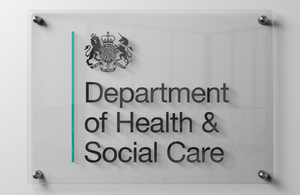- HM Land Registry launches Strategy 2022+ and three-year Business Plan to guide the next stage of its digital transformation.
- Announces commitment to lead the market in harnessing the power of digital tools and automation to speed up the homebuying process.
- Strategy is supported by the Chartered Institute of Legal Executives, the Conveyancing Association, the Council for Licensed Conveyancers, the Council of Property Search Organisations, the Law Society, the Royal Institution of Chartered Surveyors, the Society of Licensed Conveyancers and UK Finance.
The current homebuying process does not meet some basic expectations for a modern, professional service. We know that people find the process stressful and confusing. HM Land Registry will work with the property market to co-create a homebuying process of the future that is quicker, more efficient and more user friendly, under its new strategy launched today, 31 August 2022.
Strategy 2022+, ‘Enabling a world-leading property market’, sets out how HM Land Registry will transform land registration in England and Wales to cut delays for customers and influence the market to realise the potential of cutting-edge digital tools and solutions.
The next stage in transforming HM Land Registry into a global leader in digital land registration sees the organisation taking on a convening role as it invites the UK property sector to work in partnership to create a simpler, paperless and transparent process for buying and selling property which will benefit homeowners across the country.
Also published today is the new three-year Business Plan, a clear roadmap for how the organisation will implement the strategy and deliver improvements for customers.
Chief Executive and Chief Land Registrar of HM Land Registry, Simon Hayes, said:
Strategy 2022+ comes at a pivotal moment. The very high level of activity in the property market in recent times has underlined the urgency with which all players in the market need to work together to improve the system.
With property transactions taking record time to complete, it is imperative that we work as partners to innovate and remove friction so that the process is as quick and painless as possible.
For HM Land Registry, that means a step-change in our offering to customers so that they receive an outstanding, fully digital service.
As we do so, we are placing people – those buying and selling property – at the heart of our transformation.
Business Minister Lord Callanan said:
Industries across the economy stand ready to seize on the digital revolution and the UK’s world-renowned property market is no different. The digitisation proposals in this strategy will help the Land Registry deliver more efficient and user-friendly services, while driving productivity and growth for the sector.
These proposals, along with other action the Land Registry is taking such as the completion of a Local Land Charges register, will provide a boost to households and businesses engaging with the property market throughout the UK, supporting our ambitious Levelling Up agenda.
Automation will bring speed and resilience
For 160 years now, HM Land Registry has served as the critical institution protecting the right to property and enabling the market to operate. The better land registration works, the better conveyancing and the property market function. As such, HM Land Registry’s Strategy 2022+ is informed by the need to urgently build the organisation’s resilience to volatility in the property market which is the leading cause of application backlogs.
Under the strategy, many more land registration processes will be automated to significantly improve service speeds for customers. Automation, and further investment in our people, will give HM Land Registry the capacity and capability to deliver its services swiftly even in periods of very high demand, ensuring backlogs are a problem of the past.
A significant investment to automate most changes to the land register by 2025 will result in the end-to-end automation of up to 70% of all updates to the register, while maintaining the accurate and fraud-free registers that provide trust and confidence in the property market. Automated applications will be completed within one day – many of them in seconds.
Greater levels of end-to-end automation on simpler application types will also allow us to refocus our expert caseworkers onto the more complex applications that demand their expert judgement, reducing wait times for complex property transactions.
We also want to work with conveyancers who are facing the pressure of increasing demand in the market to help reduce inefficiencies elsewhere in the process. Currently, 1 in 5 applications to HM Land Registry (more than 3,500 applications every day) require us to follow up with the applicant to resolve an issue in the application. This increases to around 2 in 3 for more complex applications. This causes extensive delays to the affected applications and our average speed of service times. We are working hard to help customers reduce avoidable errors in their applications, which will save both us and conveyancers time and money.
A lack of upfront information can cause up to 8% of property transactions to fall through, costing the buyer up to £2,700 per transaction. A new drive to rapidly digitise the information the public and conveyancers need most will allow people to access HM Land Registry’s information on ownership, location, mortgages, local land charges and more in real time, so that when making a decision, people are better informed and buying and selling property is quicker and less uncertain. This will benefit those involved in all types of property transactions, both residential and commercial.
HM Land Registry’s ambitious agenda to work with the property sector to enable property to be bought and sold digitally will see it encouraging the market to adopt new technology – such as digital ID and e-signatures – by introducing new standards and working with property partners to create an open, integrated ecosystem of digital services that support property transactions. This will mean that people only need to provide their information once – rather than sending the same information to different people multiple times throughout the process of a transaction.
Opening up property data to benefit the economy
Strategy 2022+ also sets out HM Land Registry’s commitment to open up property data so that it is more transparent, easier to use and supports a strong, sustainable economy and the UK’s Net Zero targets. For example, the commitment to complete the new instant-access Local Land Charges register within the next four years is expected to add around £3bn to the UK economy.
We are committed to making our data more findable, accessible, interoperable with other data and reusable (or ‘FAIR’) to increase its potential to generate insight that helps the government and others tackle complex social, environmental and economic challenges. We will continue to energise innovation in the use of property data, in particular through our Digital Street research and development programme and our Geovation accelerator, which has already supported 137 start-ups to develop new products and services and has created more than 1,500 jobs.
HM Land Registry’s strategy is supported by stakeholders from across the property and conveyancing sector.
President of the Law Society of England and Wales, I. Stephanie Boyce, said:
We welcome HM Land Registry’s new business strategy and the focus on digital. Technological change in the conveyancing market, which was accelerated because of the COVID-19 pandemic, continues at pace.
We look forward to continuing to work with Land Registry and the industry more widely to further digitise the conveyancing process, to promote better and earlier decision-making and make residential property transactions smoother for buyers and sellers.
Beth Rudolf, Director of Delivery at the Conveyancing Association, said:
In the past HM Land Registry’s five-year strategic plans have referenced the move to digital/machine-readable and the creation of notional registers but this time it has already started the process through the delivery of the Digital Registration Service.
This is very encouraging in an industry where we need to be able to deliver digitally for the consumer and other stakeholders in order to reduce the waste of the extended transaction times and fall-through rates, and to enable the consumer to understand the implications of the title on their intended use and enjoyment to reduce claims and therefore PII premiums.


